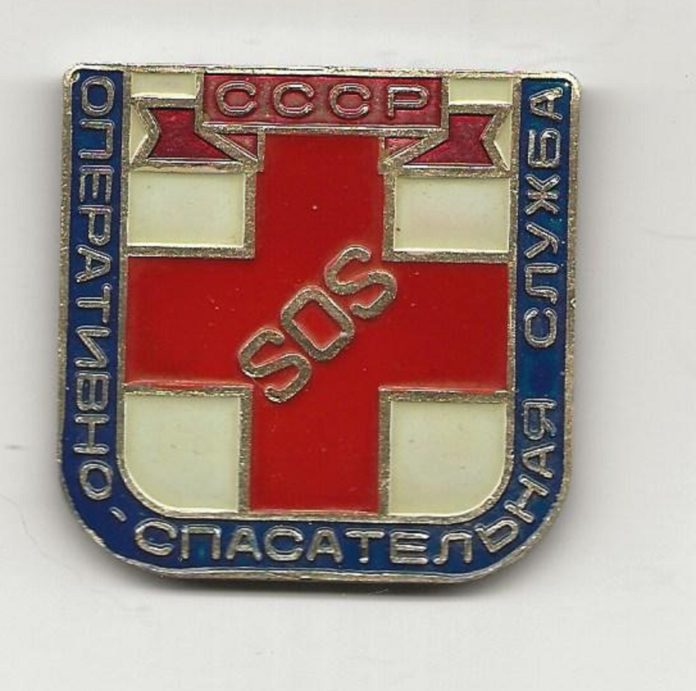Among my souvenirs my children would likely toss, this pin reads “SOS” in Roman letters and the standard “CCCP” “Operativno-Spacatelnya Sluzhba”. It was given to me by a private EMS group in Kharkiv, Ukraine in Jan 1992, just as the USSR was dissolving.
And Kharkiv has been mentioned often, on the front lines of the Russian-Ukrainian War.
I spent four months headquartered there as the guest of a private bank speaking with all sorts of people who, foreseeing what they believed would be new beginnings (and not yet brought up to speed how the new oligarch system would work and effect their plans for a free market), seeking all sorts of information and American connections.
In terms of the history that unfolded there, including forays into Moscow and Gorkiy in Russia-proper, I considered myself the luckiest man alive, for there couldn’t have been more than a handful of unaffiliated, non-governmental Americans in that region at that time. Since my only advanced skill then was in old-style American manufacturing (which the Soviets would have considered upgrades to their systems, what I called “RetroTechnology”), by 1996 I decided that I would find more fertile ground for those skills in the recently-freed Soviet satellites of Eastern Europe, who had only been under Soviet dominion for 45 years (two generations, so still with at least some memory of what it was they did in those churches that the tourists kept wanting to visit), versus the 75 year imprisonment suffered by the peoples of the USSR, where many of their churches has been turned into opera houses and museums, and outward expressions of religion strongly advised against.
My handler at the bank had been contacted by one of the SOS members and requested to be able to make a presentation to me. SOS began as a mountain climbing group; an engineer, a college geology teacher, and a doctor, and their passion was in trekking the Caucasus Mountains, which I only knew by reputation. In fact, the region had been already been closed by the Soviet government because of a little-known shooting war going on there (and I would not really know about until I returned to the States).
But SOS was national heroes because they, all amateurs, were among the first to put boots on the ground in Armenia when news broke about the devastating earthquake there in 1988. They were days ahead of state-led rescue teams that were still waiting for their bureaucracies to catch up. The joke going forward in Kharkiv was that whatever the calamity, SOS would be on site hours before state-run teams could respond. And in the three years since, they had been given their own vehicle, and access to the USSR equivalence to 911 calls. And volunteers on-call.
I met the three principals only once but rather than hit me up for donations that asked that I put them back into contact with the King County-Seattle (Washington) group who they’d worked with in Armenia. (I read the media write-up when I got back, but can’t remember which.) SOS was in sore need of supplies, from boots, to rope, and other (what I thought was) cheap equipment. (They gave me a couple of names and those were the first people I contacted when I returned to the States in April ’92. Nice people.)
Since I was an avid trekker myself SOS also showed me plans for a few 7-day to 21-day mountain adventures in the Caucasus they had lined out, replete with maps, photos. But to my knowledge that region of the mountains was never reopened.
In any case, when I war starts I do think back to the good people I knew there.





